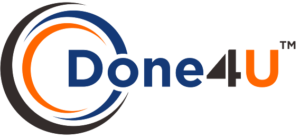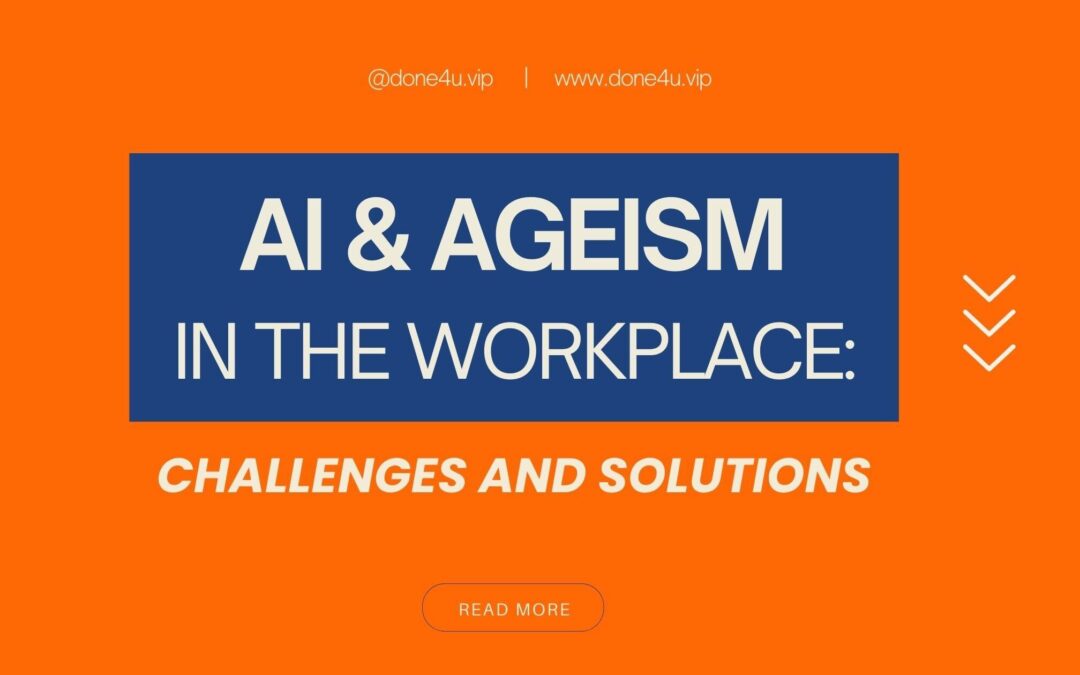AI and its effect on ageism in the workplace is a form of discrimination that’s quite widespread, though often less talked about. It’s the practice of treating individuals less favorably because of their age, built on the assumption that age correlates directly with decreased capability and willingness to adapt, especially with technology and AI. With the majority of my clients between the ages of 40 and 70, I’ve witnessed its effect firsthand.
Unfortunately, these stereotypes lead to a variety of challenges for employees, including in job descriptions, interviews, and opportunities for advancement. Older individuals’ talents and experiences are assets that are often neglected and lost, because of it.
The increasing use of artificial intelligence (AI) now plays a role in ageism in the workplace. Its design and usage has the power to both positively and negatively affect it.
Understanding how and why ageism happens can help prevent or minimize it. Many jobs prioritize younger candidates under the misguided belief that they’ll learn skills in technology faster than an older individual. This leaves a wealth of experience and skill underutilized. Beyond the direct impact on those discriminated against, it’s essential to grasp that ageism can affect everyone. It may be intentional or unintentional, yet the results can be the same.
Understanding Ageism
In tackling ageism, it’s crucial to recognize its multifaceted nature and the subtle prejudices it introduces into workplaces. We’re going to explore the various forms it takes and how stereotypes fuel this kind of discrimination. I recently attended a conference for women in business, and in one of the workshops, ageism and our own personal biases were explored. Biases the we truly were unaware of until after we completed the exercise. What was interesting though, was that even though we attributed certain behaviors to specific generations, it turned out that each generation had more in common that we had first thought. The room was filled with women from all generations. The moral of the story is to understand ageism, we first must be aware of it.
Defining Ageism and Its Forms
What exactly is “ageism” anyway?
Ageism refers to prejudice or discrimination against individuals based on their age. It can manifest in many ways, with personal ageism involving individual attitudes and behaviors, while institutional ageism reflects company policies or cultural norms that disadvantage older employees. The Age Discrimination in Employment Act (ADEA) specifically outlaws age-based employment discrimination against individuals who are 40 years of age or older, underscoring the legal recognition of ageism as a tangible concern.
AI and Ageism in the Workplace
As you navigate the interplay between your tech stack and your team, it’s vital to understand how artificial intelligence (AI) is shaping experiences in the workplace—particularly when it comes to ageism.
Near the end of 2023, when AI became a regular part of our vocabulary and conversations, how to use the new technology in our businesses and who would be using it became a regular part of weekly team meetings. Would the digital native twenty-something take the lead incorporating AI into existing systems and processes? Would the more experienced team members easily learn how to use AI coupling it with their vast knowledge of business and would they even want to? Or would it be a more collaborative team effort based on roles and expertise?
Some of my clients began to experiment with how AI could be used in their businesses as a productivity tool. I dived into researching new tools, cost effectiveness, and performance. I also explored how existing and commonly used technology incorporated AI into their user interface and capabilities.
Using Artificial Intelligence to Prevent Ageism
Artificial intelligence can be a powerful tool in combating ageism within your company.
By utilizing AI-driven HR analytics, you can ensure hiring practices are fair and unbiased. AI can analyze job applications without considering age, focusing instead on qualifications and experience. Moreover, tailored training programs can be designed using AI, which adapt to the learning pace and style of employees of all ages, promoting a culture of continual growth and inclusiveness.
Pros and Cons With Artificial Intelligence for Older Adults
Older adults may face unique barriers when interacting with AI technology, but not for a lack of ability, but stereotypes. A lack of familiarity or discomfort with AI tools can lead to a divide, which isolates those not accustomed to digital environments. However, there’s an opportunity here: by involving older adults in the development and use of AI, their needs and perspectives can inform more accessible and equitable technologies.
Moreover, teaching AI to recognize and correct for age-related biases in datasets can help create systems that support all ages effectively.
Impact of Ageism & AI on Individuals and the Workplace
Ageism, whether subtle or pronounced, can have profound impacts not just on individuals, but also on the overall environment and efficacy of the workplace. Regardless of age, navigating advances in technology is an ongoing effort for all age groups.
Older populations have been challenged by decades of technological advances and have acquired lifelong skills along the way. Discounting their experiences comes at a high price for companies. Letting older employees go with their skill sets and experience is a long-term loss. As artificial intelligence (AI) systems become more prevalent, it’s crucial that they are designed to support an age-diverse workforce rather than perpetuate negative stereotypes.
Benefits of an Age-Diverse Workforce
When your workplace embraces age diversity, you’re not just creating an inclusive culture; you’re also fostering innovation. A mix of generations can lead to a dynamic exchange of ideas and experiences. Teams with older employees can leverage their knowledge and finely honed skills alongside the fresh perspectives of younger colleagues.
In practice, an age-diverse environment promotes engagement and respect among coworkers. This respect can lead to improved physical health and mental well-being for your staff because employees feel valued regardless of age. It’s essential to challenge perceived age discrimination to maintain high morale and ensure everyone feels they have equal opportunities to contribute and grow.
AI plays a pivotal role in this, as it can perpetuate or help to dismantle workplace ageism. AI that’s programmed without regard for age diversity may enforce negative stereotypes that lead to real-world consequences. Conversely, AI designed with an awareness of age discrimination can aid in ensuring a fair and equal employment opportunity for all.
To maintain a diverse and inclusive workplace atmosphere, also bear in mind that it’s not just about having a mix of ages – it’s about how employees of all ages work together. Through thoughtful integration of technology and recognition of the value each person brings, your business is better positioned to thrive for years to come.
Conclusion
Ageism in the workplace is a multifaceted issue affecting employees and organizations at various levels. Acknowledge the potential presence of ageist practices within your organization, and consider the impact these practices have on individuals and teams. It’s important for your workplace to actively address ageism because it harms not only the individual employees but also the overall health of the organization.
By working toward a bias-free environment, you not only foster a more productive and engaging workplace but also contribute to a more equitable society. Remember, an inclusive work culture benefits everyone, creating a dynamic and resourceful team that draws on the diverse strengths of all its members.


